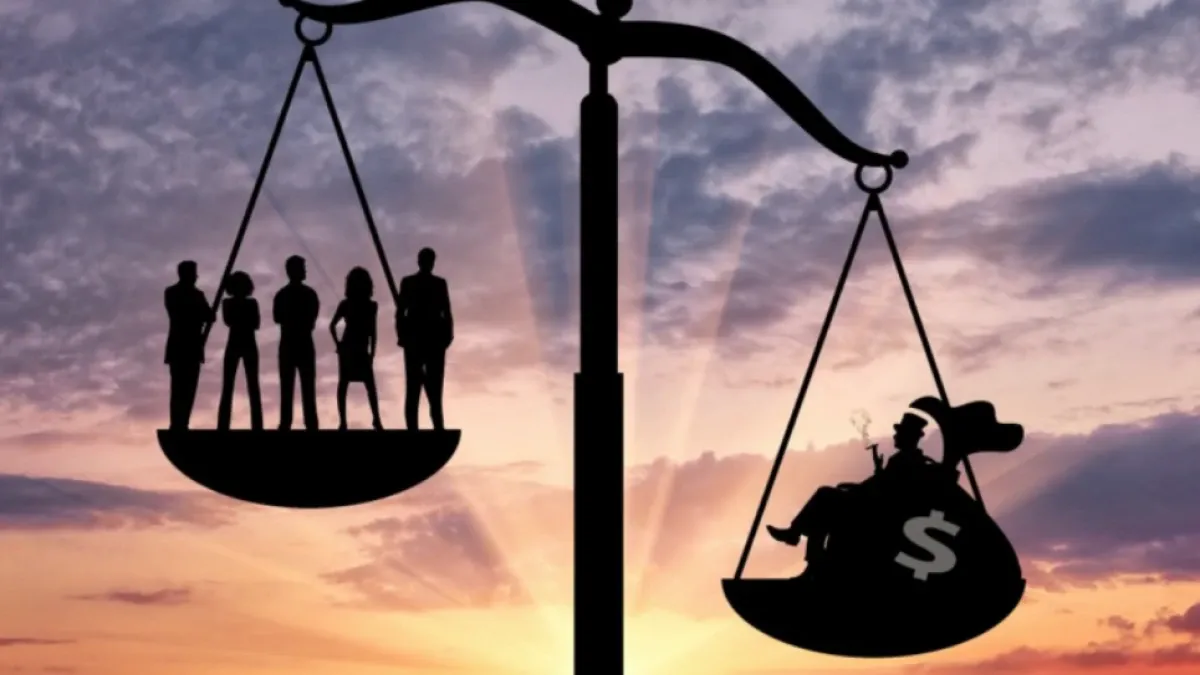Building a Balanced Future: Confronting Economic Inequality

Economic inequality refers to the unequal distribution of income and wealth among various groups in society. It is a problem in practically every country, and many individuals are locked in poverty with few opportunities to move up the social ladder.
Causes of economic inequality
Economic inequality is caused by a variety of variables, including:
- Globalization: Globalization has increased competition for employment and wages, benefiting high-skilled workers and capital owners disproportionately.
- Technological change: Job displacement and pay stagnation have also resulted from technological development for low-skilled workers.
- Government policies: Government initiatives such as tax cuts for the wealthiest and financial deregulation can also contribute to economic disparity.
- Discrimination: Discrimination based on race, gender, ethnicity, and other criteria can also result in economic inequity.
Consequences of economic inequality
Economic disparity has a number of negative societal implications, including:
- Reduced economic growth: Economic inequity can stifle economic progress by limiting social mobility and innovation.
- Increased social unrest: Economic disparity can exacerbate social unrest and political instability.
- Reduced social welfare: Economic disparity can also diminish social well-being by making it more difficult for governments to provide basic services like education and healthcare.
- Reduced health and well-being: Economic inequity can result in lower health and well-being results, such as increased obesity, heart disease, and mental illness.
Measuring economic inequality
There are a number of ways to measure economic inequality, including:
- The Gini coefficient: The Gini coefficient is a measure of income disparity that goes from 0 to 1, with 0 indicating complete equality and 1 indicating complete inequality.
- The income share of the top 1%: The income share of the top 1% measures how much of a society's total income is earned by the richest 1%.
- The wealth share of the top 1%: The top 1%'s wealth share is a measure of how much of a society's total wealth is owned by the richest 1%.
- Poverty rate: The poverty rate is the proportion of the population living in poverty. A higher poverty rate reflects greater economic inequity.
Reducing economic inequality
There are a number of policies that governments can implement to reduce economic inequality, including:
- Investing in education and healthcare: Investing in education and healthcare can help to enhance the workforce's skills and productivity, leading to greater salaries for low-skilled workers.
- Progressive taxation: Progressive taxation is a taxation system in which higher-income people pay a larger percentage of their income in taxes. This can aid in the redistribution of wealth and the reduction of income inequality.
- Minimum wage laws: Minimum wage regulations can assist in ensuring that all workers are paid a living wage.
- Social safety nets: Unemployment insurance and food stamps, for example, can serve to safeguard low-income individuals and families from financial distress.
Additional thoughts
There has been an increasing awareness of the topic of economic disparity in recent years. This is attributable, in part, to increasing inequality in many countries around the world. In the United States, for example, the richest 1% of earnings currently control approximately 21% of all income, up from 10% in 1980.
Rising levels of economic inequality have a number of severe societal implications. Economic disparity, as previously said, can impede economic development, raise social discontent, reduce social mobility, and exacerbate health inequities.
There are several steps that can be taken to alleviate economic disparity. It is crucial to highlight, however, that there is no one solution to this complex situation. A comprehensive approach that addresses the underlying causes of inequality and implements policies that promote economic opportunity for all is required.
Some specific policy proposals that have been suggested to reduce economic inequality include:
- Raising the minimum wage
- Expanding access to affordable childcare and education
- Investing in infrastructure and job training programs
- Making the tax system more progressive
- Strengthening social safety nets
It is crucial to highlight that there is disagreement on the efficacy of these policies. However, economists are increasingly agreeing that economic inequality is a major issue that must be addressed.
Conclusion
Economic inequality is a complicated problem with no simple answers. However, economic inequality must be addressed because it has a lot of negative repercussions for society. Governments can minimize economic disparity by implementing policies such as investing in education and healthcare, implementing fair taxation, and providing social safety nets.
Individuals and businesses, in addition to government measures, can help to reduce economic disparity. Individuals, for example, can support firms that pay a livable wage to their employees and are devoted to diversity and inclusion. Businesses can also develop strategies to eliminate employee wage discrepancies and encourage social mobility.
